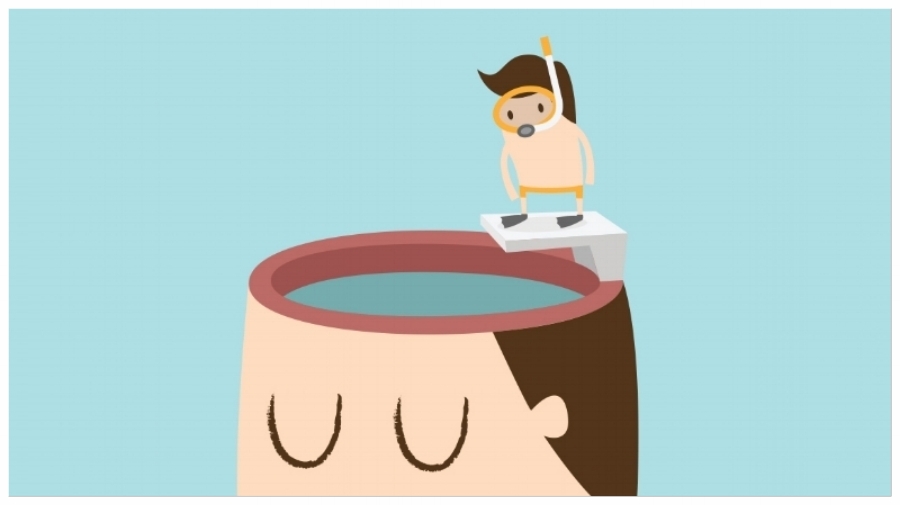The heart of any good relationship is the ability to see things from each other’s perspectives. That simple quality leads to empathy, compassion, respect, and a fair negotiation of terms (spoken or not) that allows us to meet each other’s needs.
The same rules apply in working to improve diversity and inclusion in any setting, because we need better relationships between groups of people. In many situations, with the best of intentions, our attempts at addressing these cross-cultural relationships is to address them anthropologically… like we are studying another world, or people completely different from us.
We forget that this is more about a relationship. And like in any relationship, we have our role. The way we think about others determines how we act toward them. When we forget this, a critical error begins.
Imagine a goldfish in awe of other goldfish of different shapes and colours. But this goldfish is outside the bowl looking in. Its little fins pressed up against the glass looking at the other fish inside the bowl. Not only is it preposterous, but it’s actually deadly for that fish because it’s not in the water. In order for that fish to survive, it needs to realize it lives in the same world as those other fish. Even if they appear different, and may act slightly different, they are still all fish.
Psychologists who study relationships between different cultural groups, and who make recommendations on how to improve those relationships, will also attest to this error: that we first try to learn about others, before identifying how we think (about others).

In order for diversity and inclusion initiatives to be successful, organizations, and individuals in that organization (in particular leadership), must first identify their own world views, their view of themselves as a cultural entity, and how those perspectives influence their interactions with people different from them.
Based on the study of cognitive psychology, our thoughts have a significant impact on how we feel, and the choices we make. In fact, our thoughts and perspectives determine exactly why we do certain things.
Some thoughts, or perspectives, are easy to identify. For example, if I believe cake is tasty, I will eat it. Clear, simple, and delicious. But our perspectives develop over time and can sometimes can be harder to identify because they’re imbedded in a long history of behaviour. We learn them through our experiences starting early in life. We learn them through what we are taught, but most especially through what we are not taught. And we also learn through observing others.
All of these factors create sophisticated and nuanced layers of thinking, where some of our actions become automatic, because the thinking behind them are well ingrained into our minds.
Our views on how we see other people, in particular people different from us, are examples of these thoughts. These deeply embedded thoughts can often produce an unconscious bias.
This means we have a tendency to make quick decisions based on a preference we have, without even realizing it. And those preferences arelearned. If I were to believe someone from a particular culture has beliefs that are barbaric, my interactions with that person or people from that group are likely be defensive and judgmental, unless I were to reevaluate if what I was thinking was accurate or not.
When we don’t question our thinking, we miss out on the nuances of culture in people’s lives. We begin to see things in black or white terms (stereotypes), instead of varying degrees of gray that exist in the true reality of the world.
Those unconscious patterns of thinking can influence our behaviours to make a person different from us feel patronized and objectified. They can lead to assumptions we make about that person or group that can come across as embarrassing. All of these threaten the relationship that is needed to do good work with that person or group.
If we are complacent in not questioning our thoughts, we get stuck in patterns of unhealthy behaviour. If I don’t question how much cake I eat, and simply eat because it’s absolutely delightful, then I put my health at risk. If we don’t question our biases, then we put diversity and inclusion at risk.
We see examples of this all the time in many organizations and workplaces. Since individuals determine the policies and practices of organizations, their unconscious bias tends to show up in the policies and practices of their organizations, and in the way they practice and interact with their clients. And as well-meaning as those organizations may be, those biases create a concept of institutionalized bias, and what some may call institutionalized racism.
Identifying our own bias can be difficult, often because the word tends to be associated with more anxiety provoking words like discrimination. One way to help disarm this anxiety is to be aware that we all have a bias of one form or another. And that the process of becoming culturally competent is actually one that is ongoing, versus having a finite end point in which you receive a certificate of completion.
In the same way that great relationships adapt, each person meeting the need of the other over the course of a lifespan, so too must our skills of understanding our bias, and our abilities to understand the perspectives of different people in an increasingly diverse societies and organizations.
If diversity and inclusion is about the improved relationships between groups of people, then it’s important to ensure that our policies and practices are not inadvertently excluding people and the diverse ideas and experiences they bring with them that can often allow our organizations to flourish and grow.
We must begin to see ourselves as a part of a relationship, recognizing how our beliefs and consequential actions determine the thoughts and feelings of those around us.
Although this might seem like a pretty obvious statement when it comes to relationships, we forget this when we address relationships with people who are different from us. We become that little goldfish outside of the bowl looking in, forgetting we are part of the same world, and that we all have a role to play in changing it for the better.





